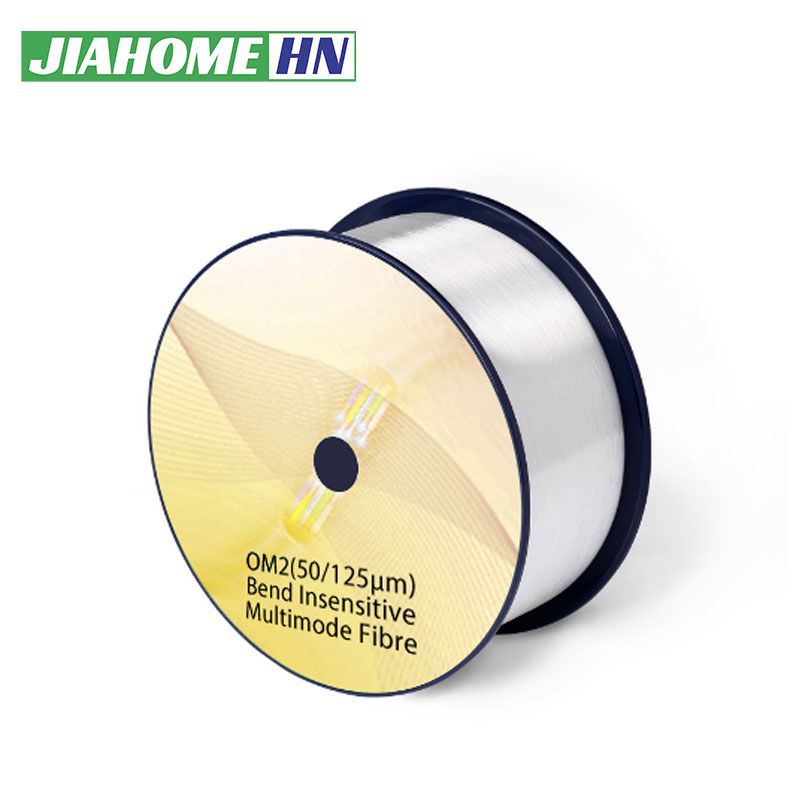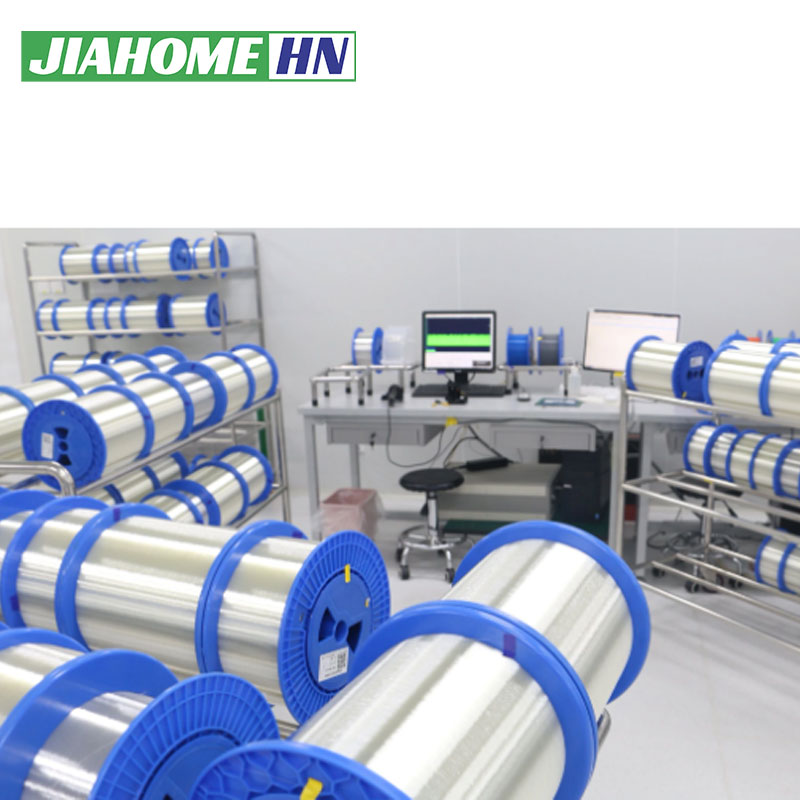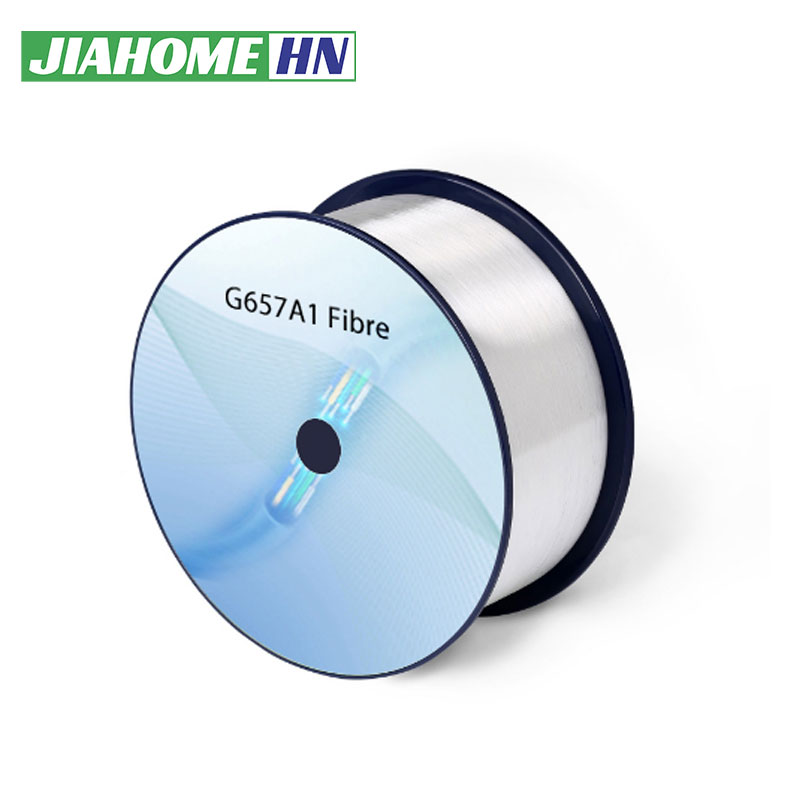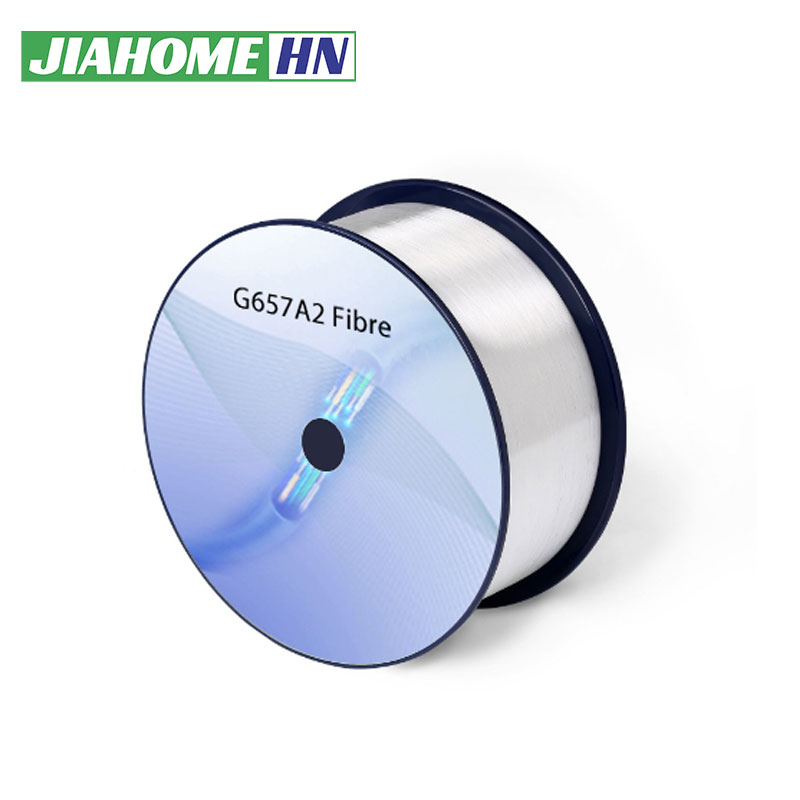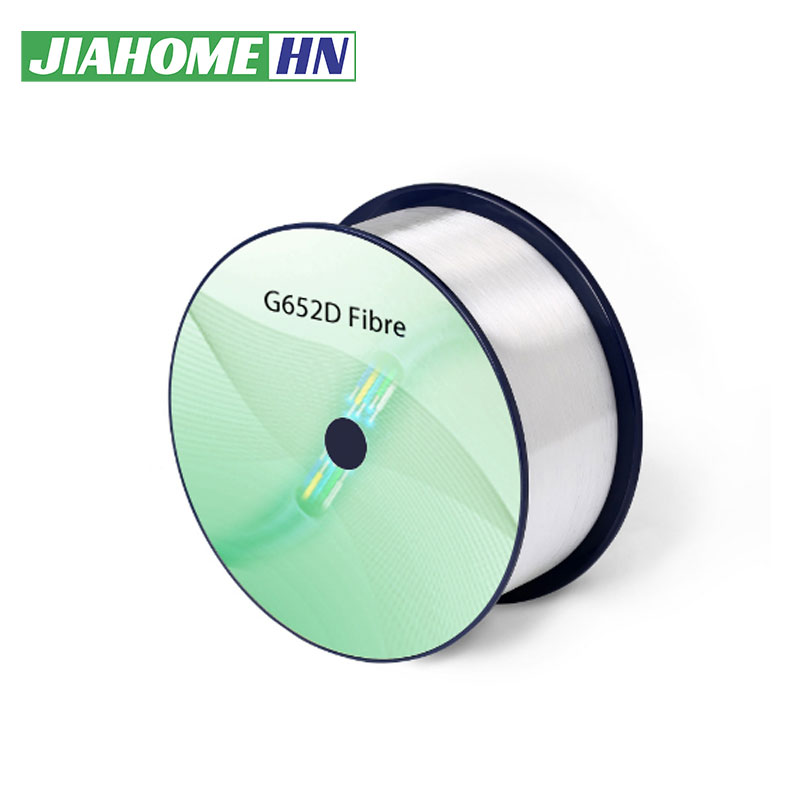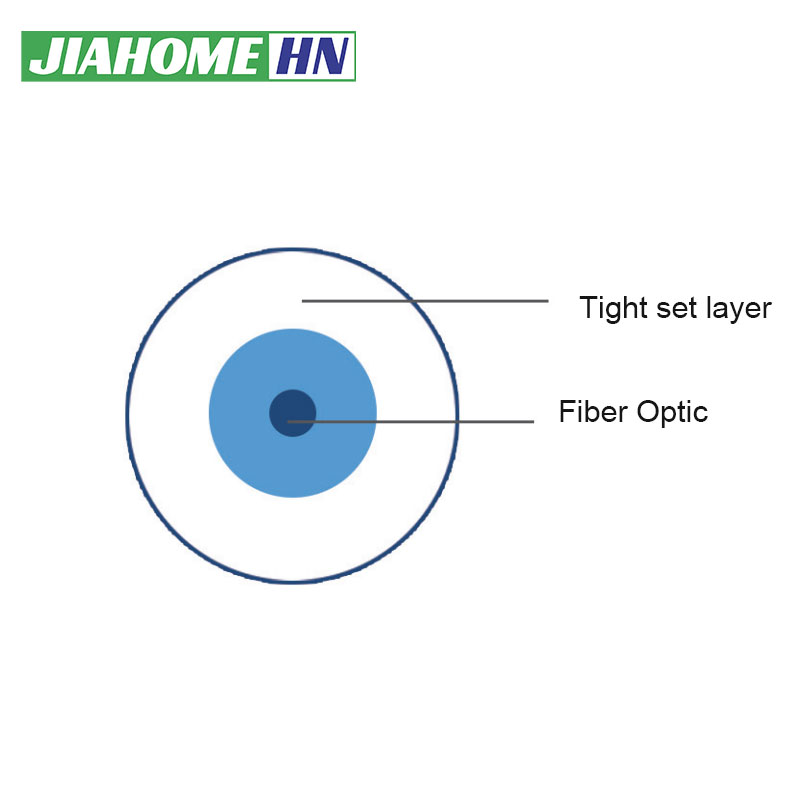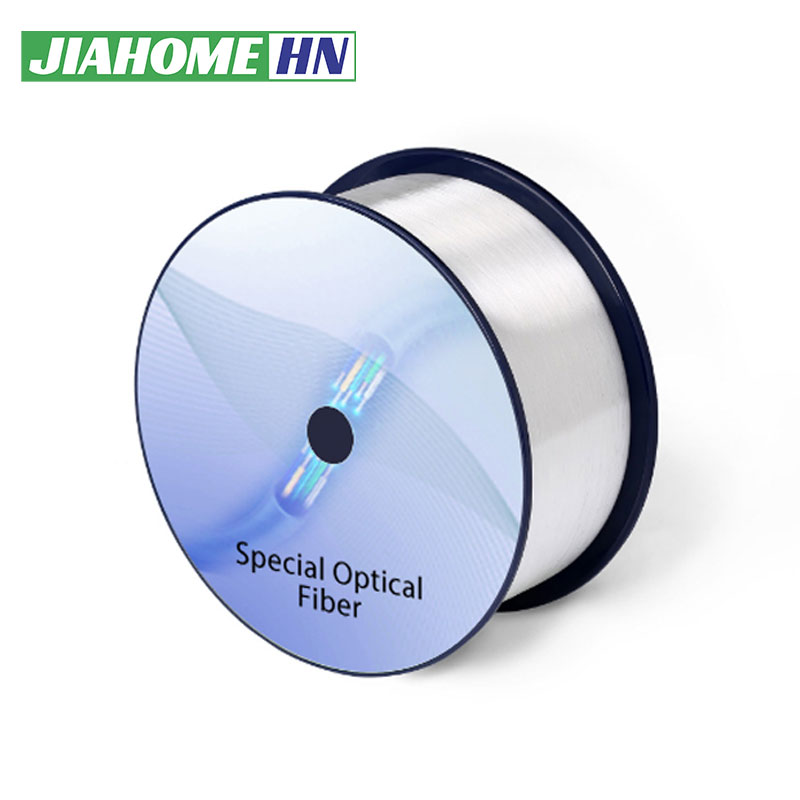OM4 Bend Insensitive Multimode Fibre
Video
Features
1. Bend Insensitivity: OM3/OM4 BIMMF utilizes advanced fiber design and manufacturing techniques, resulting in lower signal loss when bent. It maintains high transmission quality even at larger bending angles, without signal loss or degradation.
2. High-Speed Data Transmission: OM3/OM4 BIMMF is suitable for high-speed data transmission, supporting data rates of up to 40 Gbps and 100 Gbps. It performs exceptionally well in short-distance data center and local area network (LAN) applications.
3. Wide Bandwidth: OM3/OM4 BIMMF offers high bandwidth, enabling support for multi-channel transmission and high-density data transfer. It is suitable for applications that require the transmission of large amounts of data, such as data centers, server interconnects, and high-performance computing.
4. Low Modal Dispersion: OM3/OM4 BIMMF exhibits low modal dispersion, meaning that different modes of the optical signal propagate at closer speeds in multimode transmission. This reduces signal distortion and delay.
5. Compatibility: OM3/OM4 BIMMF is compatible with other OM3/OM4 fibers, allowing seamless integration with existing fiber equipment and infrastructure.
In summary, OM3/OM4 BIMMF provides a high-performance and reliable solution for multimode fiber applications by offering bend insensitivity, high-speed data transmission, wide bandwidth, low modal dispersion, and compatibility. It is widely used in data centers, LANs, server interconnects, high-performance computing, and other areas that require high-speed and reliable fiber optic transmission.
Application
OM3/OM4 Bend Insensitive Multimode Fiber (BIMMF) finds application in various areas that require high-speed and reliable multimode fiber optic transmission. Some common application areas of OM3/OM4 BIMMF include:
1. Data Centers: OM3/OM4 BIMMF is widely used in data center environments for high-speed data transmission between servers, storage devices, and networking equipment. It supports the efficient transfer of large volumes of data, facilitating fast and reliable communication within the data center infrastructure.
2. Local Area Networks (LANs): OM3/OM4 BIMMF is suitable for LAN applications where high-speed connectivity is required, such as office buildings, educational institutions, and government facilities. It enables fast and reliable data transfer between network switches, routers, and end-user devices.
3. Server Interconnects: OM3/OM4 BIMMF is employed in server interconnects within rack systems or blade servers. It facilitates efficient and high-bandwidth communication between servers, enabling faster data processing and improved system performance.
4. High-Performance Computing: OM3/OM4 BIMMF is utilized in high-performance computing (HPC) environments that require fast and reliable data transmission for computational tasks, simulations, and scientific research. It enables high-speed connectivity between compute nodes, storage systems, and networking infrastructure.
5. Video and Audio Applications:OM3/OM4 BIMMF is used in video and audio applications that require high-bandwidth transmission, such as broadcasting, multimedia production, and video conferencing. It ensures the smooth and uninterrupted transfer of high-definition video and audio signals.
6. Fiber Optic Networks: OM3/OM4 BIMMF is deployed in fiber optic networks, including backbone networks, campus networks, and metro networks. It supports high-capacity data transmission and provides reliable connectivity over extended distances.
Overall, OM3/OM4 Bend Insensitive Multimode Fiber is widely applied in environments that demand high-speed, high-bandwidth, and reliable multimode fiber optic communication.
Specifications
|
Characteristics |
Conditions |
Specified values |
Units |
|
Geometry Characteristics |
|||
|
Core Diameter |
-- |
50±2.5 |
[μm] |
|
Core Non-Circularity |
-- |
≤5.0 |
[%] |
|
Cladding Diameter |
-- |
125.0±1.0 |
[μm] |
|
Cladding Non-Circularity |
-- |
≤1.0 |
[%] |
|
Coating Diameter |
-- |
245±7 |
[μm] |
|
Coating/Cladding Concentricity Error |
-- |
≤10.0 |
[μm] |
|
Coating Non-Circularity |
-- |
≤6.0 |
[%] |
|
Core/Cladding Concentricity Error |
-- |
≤1.5 |
[μm] |
|
Delivery Length |
-- |
up to 17.6 |
[km/reel] |
|
Optical Characteristics |
|||
|
Attenuation |
850nm |
≤2.3 |
[dB/km] |
|
1300nm |
≤0.6 |
[dB/km] |
|
|
Overfilled Modal Bandwidth |
850nm |
≥500 |
[MHz·km] |
|
1300nm |
≥500 |
[MHz·km] |
|
|
Numerical Aperture |
-- |
0.200±0.015 |
-- |
|
Group Refractive Index |
850nm |
1.482 |
-- |
|
1300nm |
1.477 |
-- |
|
|
Zero Dispersion Wavelength,λ0 |
-- |
1295-1340 |
[nm] |
|
Zero Dispersion Slope,S0 |
1295nm≤λ0≤1310nm |
≤0.105 |
[ps/(nm2·km)] |
|
1310nm≤λ0≤1340nm |
≤0.000375(1590-λ0) |
[ps/(nm2·km)] |
|
|
Macrobending Loss |
-- |
-- |
-- |
|
2 Turns @ 15 mm Radius |
850nm |
≤0.1 |
[dB] |
|
1300nm |
≤0.3 |
[dB] |
|
|
2 Turns @ 7.5 mm Radius |
850nm |
≤0.2 |
[dB] |
|
1300nm |
≤0.5 |
[dB] |
|
|
Backscatter Characteristics |
1300nm |
-- |
-- |
|
Step(Mean of Bidirectional Measurement) |
-- |
≤0.10 |
[dB] |
|
Irregularities Over Fibre Length and Point Discontinuity |
-- |
≤0.10 |
[dB] |
|
Attenuation Uniformity |
-- |
≤0.08 |
[dB/km] |
|
Environmental Characteristics |
850nm & 1300nm |
-- |
-- |
|
Temperature Cycling |
-60℃ to 85℃ |
≤0.10 |
[dB/km] |
|
Temperature-Humidity Cycling |
-10℃ to 85℃,4% to 98% RH |
≤0.10 |
[dB/km] |
|
Water Immersion |
23℃, 30 days |
≤0.10 |
[dB/km] |
|
Dry Heat |
85℃,30 days |
≤0.10 |
[dB/km] |
|
Damp Heat |
85℃, 85% RH,30 days |
≤0.10 |
[dB/km] |
|
Mechanical Specification |
|||
|
Proof Test |
-- |
≥9.0 |
[N] |
|
-- |
≥1.0 |
[%] |
|
|
-- |
≥100 |
[kpsi] |
|
|
Coating Strip Force |
typical average force |
1.5 |
[N] |
|
peak force |
≥1.3,≤8.9 |
[N] |
|
|
Dynamic Stress Corrosion Susceptibility Parameter(nd, typical) |
-- |
20 |
-- |


HOT-SALE PRODUCT
Outdoor optical cable, indoor optical cable, indoor armored optical cable, air-blown optical cable, OPGW, optical jumper, etc.




